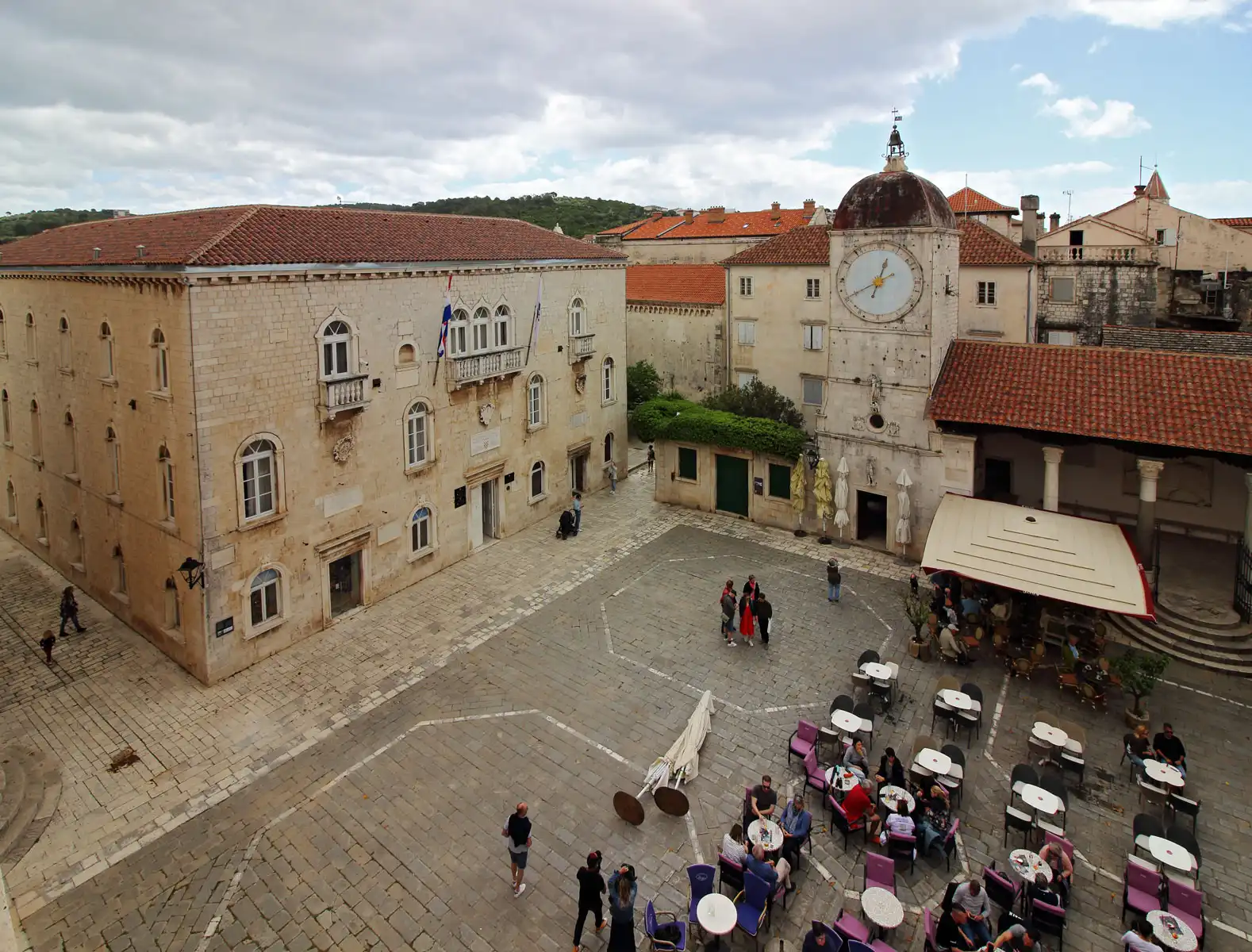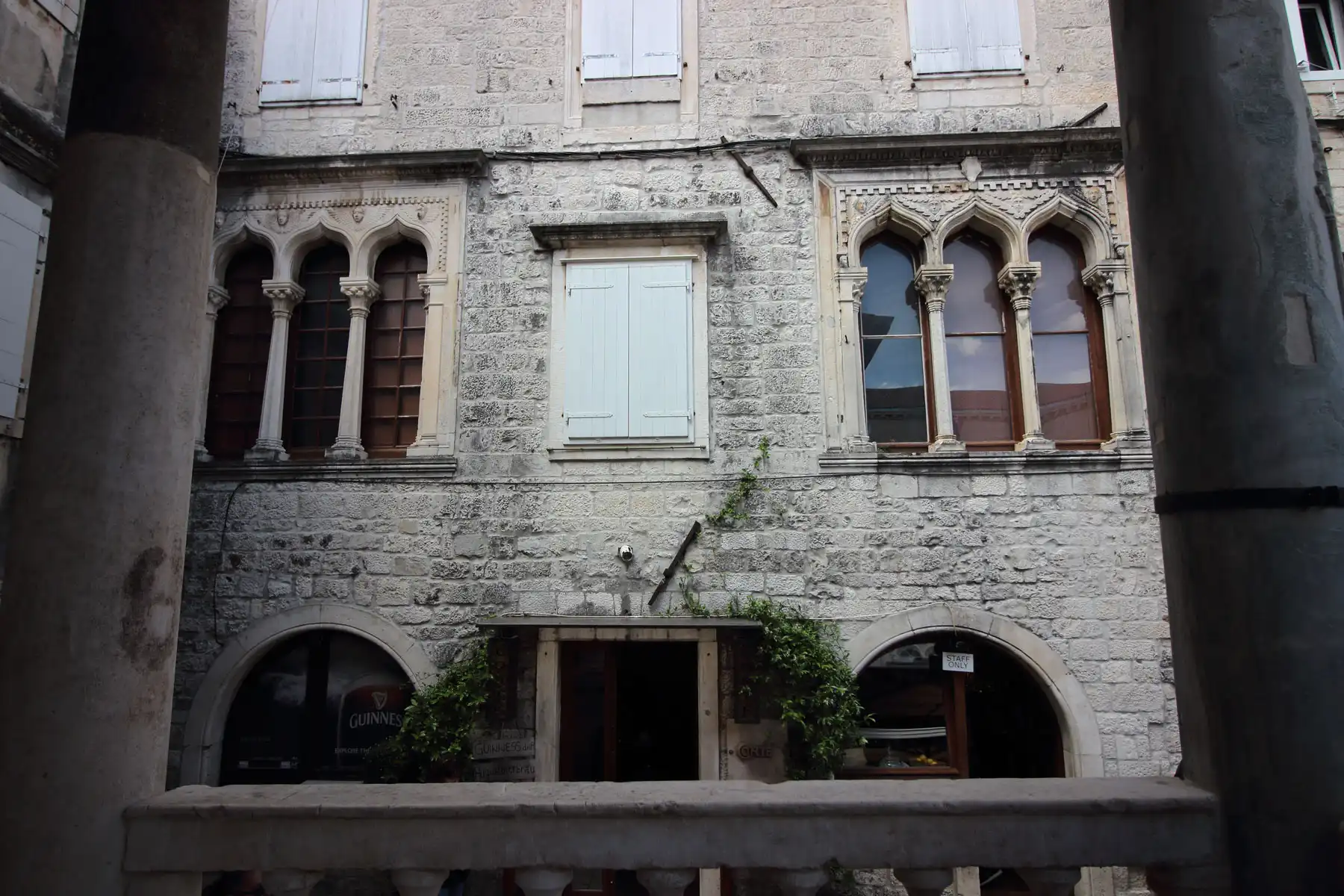MAESTRO TOURS
Tour guide Licensed for Split-Dalmatia county

T R O G I R
Private tours in Trogir
Tour guide Mladen
Trogir
- the pearl of Dalmatia,town founded in the 4th century BC. has preserved its original street grid until nowadays. The city of masterpieces of Romanesque, Gothic, Renaissance and Baroque art that is mostly concentrated within the beautiful cathedral of St. Lawrence (Lovro). At the very entrance to the cathedral, Radovan's portal will tell you the whole story, from the original sin to the redemption, and the view of the chapel of St. John Orsini will leave you breathless.
Due to rich history as well as its immense beauty the Historic City of Trogir was inscribed on the World Heritage List in 1997.
The entire walk through the city will take you back centuries through history, and each house will tell you its unique story.
Would you like to walk, in the company of a licensed local tour guide, and be a part of that story?
Call me at 00 385 99 1973 632

![]() or write a mail.
or write a mail.

(Just click on the corresponding icon above)






Tour guide Mladen - Private tours Trogir, the pearl of Dalmatia. Tour guide Mladen takes you to the city of Trogir, a true treasure trove of Romanesque, Gothic, Renaissance and Baroque masterpieces. In the III CENTURY BC. K. Trogir was founded by Greek colonists. 1240 G Radovan's portal, a masterpiece of the great Croatian artist, was completed. The most valuable monument of Romanesque art in Croatia. Tourist guide Mladen - Private tours Trogir, takes you to visit the City lodge built at the end of the 13th century, one of the most valuable architectural landmarks in Trogir. The prince's palace is located on the eastern part of the main square. Its construction began in the XIII century. century on the site of the northern wing of the church of St. Stjepan. The Renaissance windows of the palace overlooking the square are rich in decorations designed by Nicholas the Florentine. In the inner courtyard we can find a Gothic staircase in the style of the builder Matija Gojković.
In the center of the palace is the original crown of the well, with the winged lion of St. Mark together with the mark On the south side of the town square is the church of St. Sebastiana - the city clock tower. Located between the church of St. Mary (sacred art museum) and the city lodge, St. Sebastian was built as a votive church for salvation from the plague. Above the door is a statue of St. Sebastian, and above it is a statue of Christ sending his blessing. The interior space is dedicated to Sebastian (the saint of soldiers), as well as to those who died in the fight for Croatian independence. In the 15th century, the Kamerlengo tower was built in Trogir. Tour guide Mladen will also show you the Church of St. Mary was built in the 9th century. It was a six-story building with a dome in the center. Today, in its place, there is a museum of sacral items, both partly from the cathedral and from other churches in Trogir. The loggia was first mentioned at the beginning of the 14th century. century, and took its current form after the restoration by Nicholas of Florence in the 15th century. The columns on the loggia were brought from the ancient ruins. In the past, the lodge served as a courtroom, whose judge's table still stands there. Above the table are Renaissance sculptures, Latin inscriptions about justice and coats of arms. The southern wall bears a relief of Ban Petar Berislavić, who opposed the Venetians and the Turks. It is the work of Ivan Meštrović. In 1997, Trogir was included in the UNESCO cultural heritage list.


